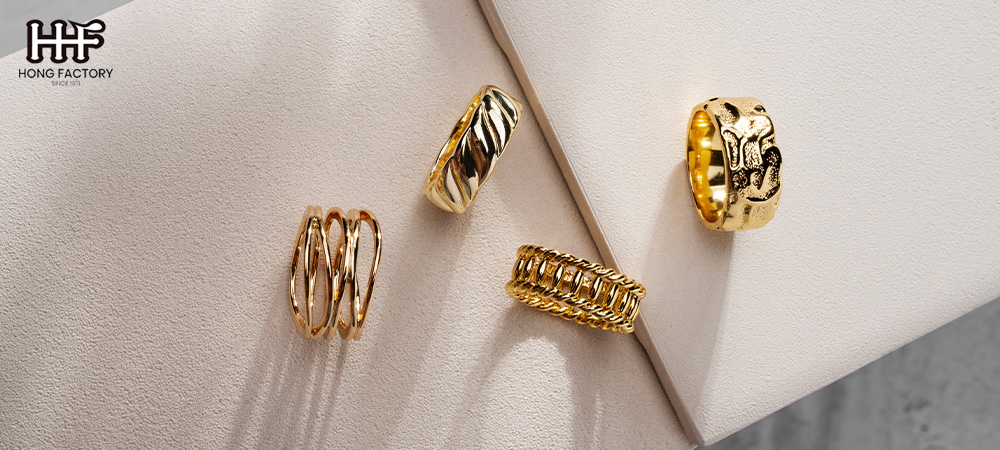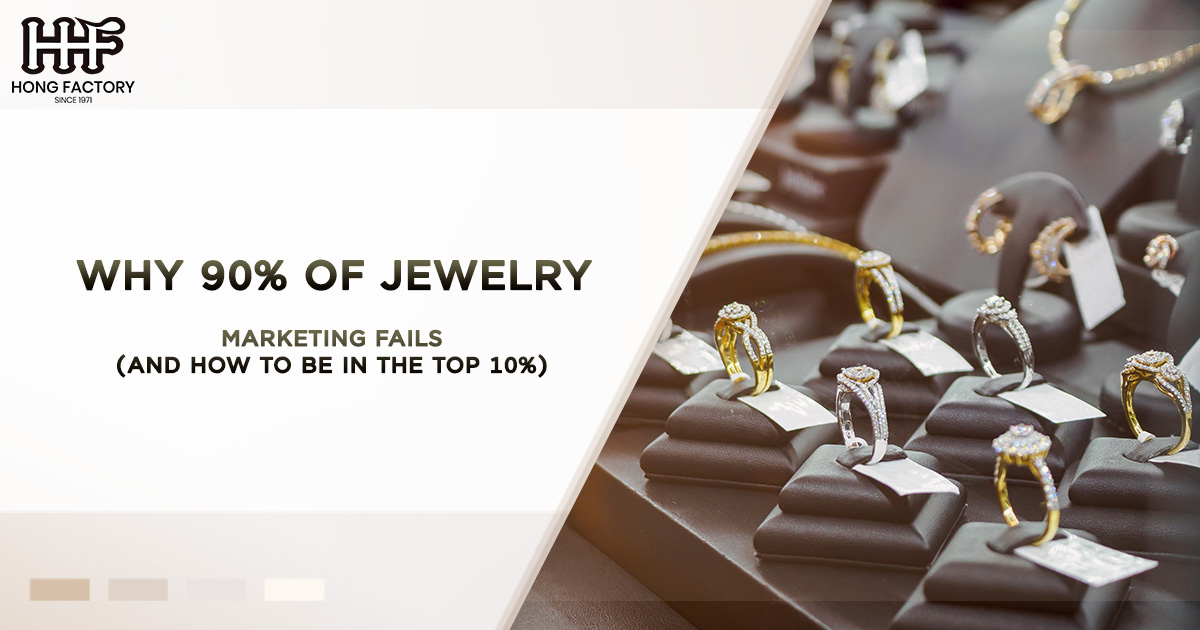The jewelry industry is renowned for its beauty, craftsmanship, and emotional symbolism. Yet, for marketers in this space, it’s a challenging business landscape. Despite the allure of precious metals and gemstones, an astonishing 90% of jewelry marketing campaigns fail to achieve their desired goals. Why does this happen? More importantly, how can you position your brand to stand out and join the elite 10% of marketers who consistently succeed?
In this article, we’ll explore the common marketing mistakes jewelry businesses make, the critical importance of ROI, how optimization can transform your efforts, and the success metrics you need to track. Let’s help your jewelry brand shine brighter than ever before.
The Most Common Marketing Mistakes in the Jewelry Industry
Jewelry marketing often falters because businesses fail to address the unique nuances of this highly competitive and emotional industry. Below are some of the most common mistakes that hold brands back:
Ignoring the Power of Storytelling
A piece of jewelry is rarely just a product—it’s an emotional and personal investment. Yet, many marketers focus solely on features (e.g., carat weight, metal type) instead of telling stories that connect with their audience. Jewelry buyers are looking for meaning, whether it’s a proposal ring, a gift, or a self-purchase. Without a compelling narrative, your marketing falls flat.
Overlooking the Target Audience
Too many jewelry brands rely on generic marketing that appeals to “everyone.” The reality is that audiences differ vastly in terms of preferences, budgets, and buying motivations. Whether you’re targeting millennials shopping for affordable fashion jewelry or affluent customers seeking high-end designs, a one-size-fits-all approach will fail to resonate.
Neglecting Digital Presence
The jewelry industry has historically relied on in-store sales and word-of-mouth referrals. While these are still important, a lack of investment in digital marketing can be fatal in today’s market. Many brands fail to embrace social media, e-commerce, and SEO strategies, missing out on the massive online audience.
Focusing on Vanity Metrics
Some jewelry marketers fall into the trap of focusing on metrics like social media likes or website traffic without considering how these contribute to actual revenue. Success isn’t just about being visible—it’s about conversions and profitability.
Poor Visual Content
Jewelry is a visual product, and yet, many brands use subpar photography or fail to invest in videos and other rich media. Low-quality images can reduce the perceived value of products, discouraging potential buyers.
The Role of ROI in Jewelry Marketing
Return on Investment (ROI) is the cornerstone of marketing success. Without understanding your ROI, you’re essentially throwing money into the void. Here’s why ROI is particularly important in the jewelry industry:
High Competition, High Stakes
Jewelry marketing often requires significant upfront investment, whether in advertising, influencer partnerships, or event sponsorships. If these efforts don’t deliver a measurable return, your profits can quickly erode. Tracking ROI ensures your resources are allocated to strategies that work.
Emotional Purchases
Jewelry is an emotional purchase, but emotions don’t guarantee sales. Measuring ROI allows you to evaluate whether your campaigns are effectively tapping into the emotional triggers that lead to conversions.
Identifying What Works
By focusing on ROI, you can pinpoint which channels and campaigns are driving the most revenue. Are your Instagram ads outperforming your Google Ads? Is your email marketing delivering better results than your influencer collaborations? Regular ROI analysis ensures you’re investing in the right strategies.
Optimization—The Key to Joining the Top 10%
Optimization is the process of making continuous improvements to your marketing efforts to maximize performance. In the jewelry industry, where details matter, optimization can make or break your campaigns. Here’s how to elevate your marketing game:
Optimize for Personalization
Jewelry customers expect a tailored experience. Use data to segment your audience and create personalized offers. For example, send targeted emails to past customers reminding them of anniversaries or holidays, and recommend products based on their purchase history.
Refine Your Content
A/B test your ad copy, visuals, and calls-to-action to identify what resonates most with your audience. Your content should emphasize the emotional value of your jewelry, such as its role in celebrating love, milestones, or self-expression.
Enhance Your Website
Your website is your digital storefront. Optimize it for speed, mobile-friendliness, and user experience. Ensure your product pages include high-quality imagery, detailed descriptions, and social proof (e.g., reviews). Simplify the checkout process to reduce cart abandonment rates.
Leverage Social Media
Platforms like Instagram and Pinterest are tailor-made for jewelry marketing, given their visual nature. Optimize your social media strategy by posting regularly, engaging with your audience, and experimenting with formats like reels, stories, and live videos to showcase your products.
Invest in Retargeting
Most jewelry customers don’t buy on their first visit. Retargeting ads keep your brand top-of-mind, reminding potential customers of the products they browsed or added to their cart. This is a proven way to boost conversions.
Success Metrics—What to Track and Why
To stay in the top 10% of jewelry marketers, you need to track the right success metrics. Here are the key performance indicators (KPIs) that matter most:
Conversion Rate
This is the percentage of visitors who complete a desired action, such as making a purchase or signing up for your newsletter. A low conversion rate indicates that your website or marketing funnel needs improvement.
Customer Acquisition Cost (CAC)
How much are you spending to acquire each customer? Knowing your CAC helps you determine whether your campaigns are cost-effective and sustainable.
Average Order Value (AOV)
Increasing your AOV—by upselling or bundling products, for example—can significantly boost your revenue. Track this metric to identify opportunities for growth.
Customer Lifetime Value (CLV)
Repeat customers are the lifeblood of any jewelry business. CLV measures how much revenue you can expect from a customer over their lifetime. Strategies like loyalty programs and personalized marketing can help increase this metric.
Return on Ad Spend (ROAS)
This metric shows how much revenue you’re earning for every dollar spent on advertising. A high ROAS indicates that your campaigns are performing well, while a low ROAS signals the need for optimization.

How to Stand Out in the Jewelry Market
To join the top 10% of jewelry marketers, you need to build a brand that resonates deeply with your audience. Here are some actionable strategies:
Build an Emotional Connection
Tap into the emotional reasons why people buy jewelry. Share stories of love, success, and celebration through your marketing. Create campaigns that make your audience feel something.
Focus on Sustainability
Modern consumers care about ethical sourcing and sustainability. Highlight your commitment to conflict-free diamonds, recycled metals, or environmentally friendly practices to appeal to conscious buyers.
Collaborate with Influencers
Partner with influencers who align with your brand values and aesthetics. Their endorsements can lend credibility and help you reach new audiences.
Embrace Innovation
Explore emerging technologies like augmented reality (AR) to let customers virtually “try on” jewelry. Investing in cutting-edge tools can set you apart from competitors.
Create a Seamless Omni-Channel Experience
Today’s customers expect a seamless shopping experience across all channels, from social media to your physical store. Ensure your brand messaging and customer service are consistent everywhere.
Conclusion
The jewelry industry is as challenging as it is rewarding. By avoiding common marketing mistakes, focusing on ROI, optimizing your efforts, and tracking the right success metrics, you can position your brand for long-term success. Remember, the key to joining the top 10% of jewelry marketers lies in understanding your audience, telling compelling stories, and constantly refining your strategies. With dedication and creativity, your brand can shine as brightly as the jewels you sell.
